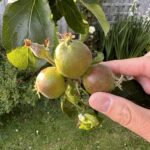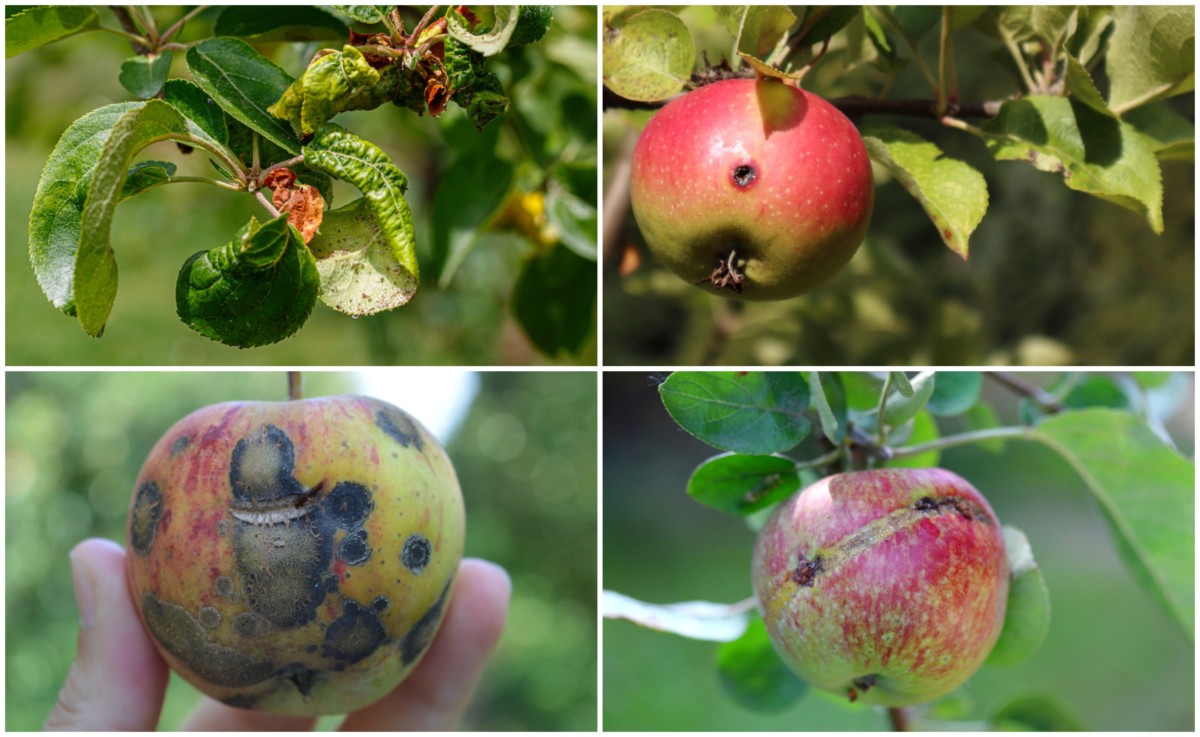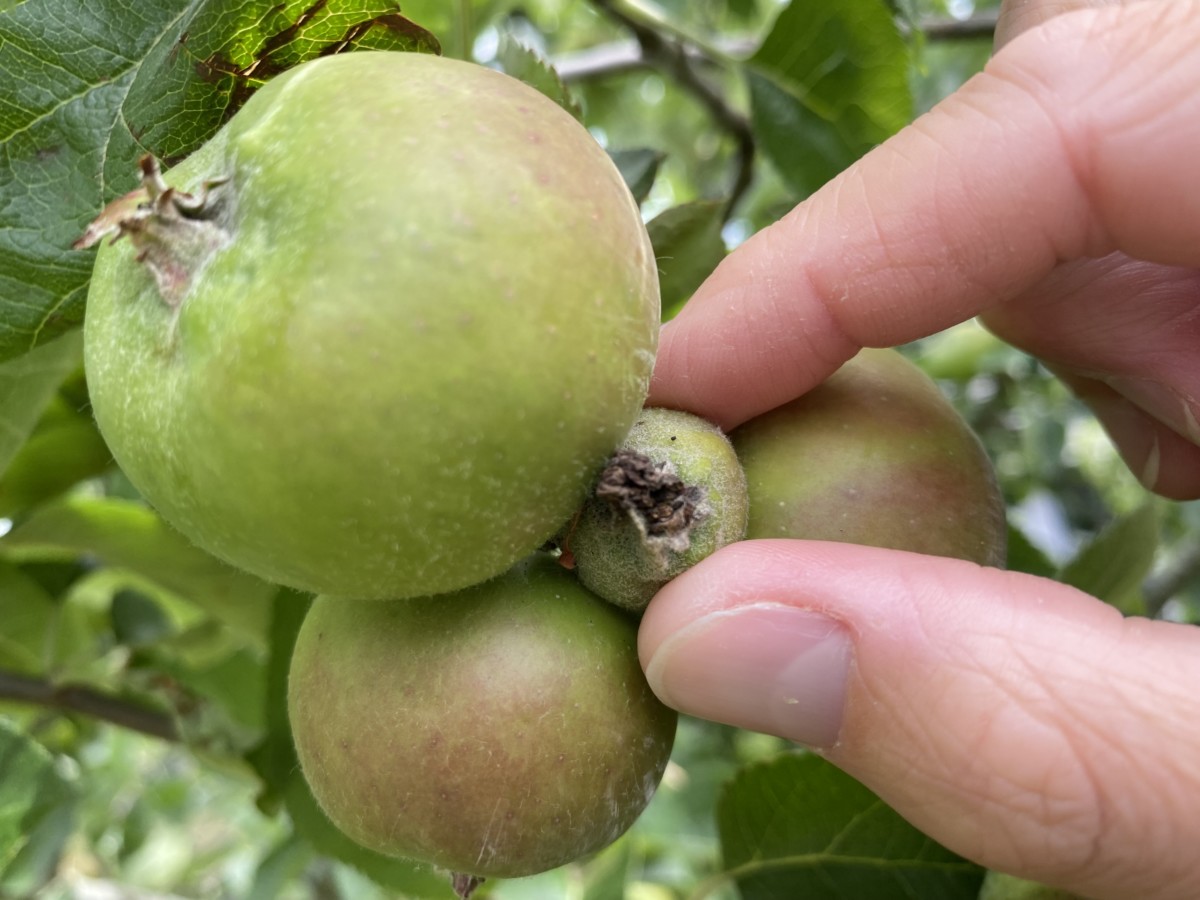
If you’re lucky enough to have your own fruit trees, then you know there is no comparison to the flavor and juiciness of a freshly picked peach or apple from your orchard. Nothing in the supermarket or even the farmer’s market can compare. But you also know these trees require work and patience to produce delectable fruit.
In late spring-early summer, it’s time to tackle one of the most important fruit tree tasks of the year – thinning.
It may seem strange, but if you want to ensure the overall health of your fruit trees and yield a bumper crop of fruit later, you need to thin out some of the fruit earlier in the season. Thinning some of the green fruit has several benefits, which we’ll cover here.
Why Do You Need to Thin Fruit Trees?
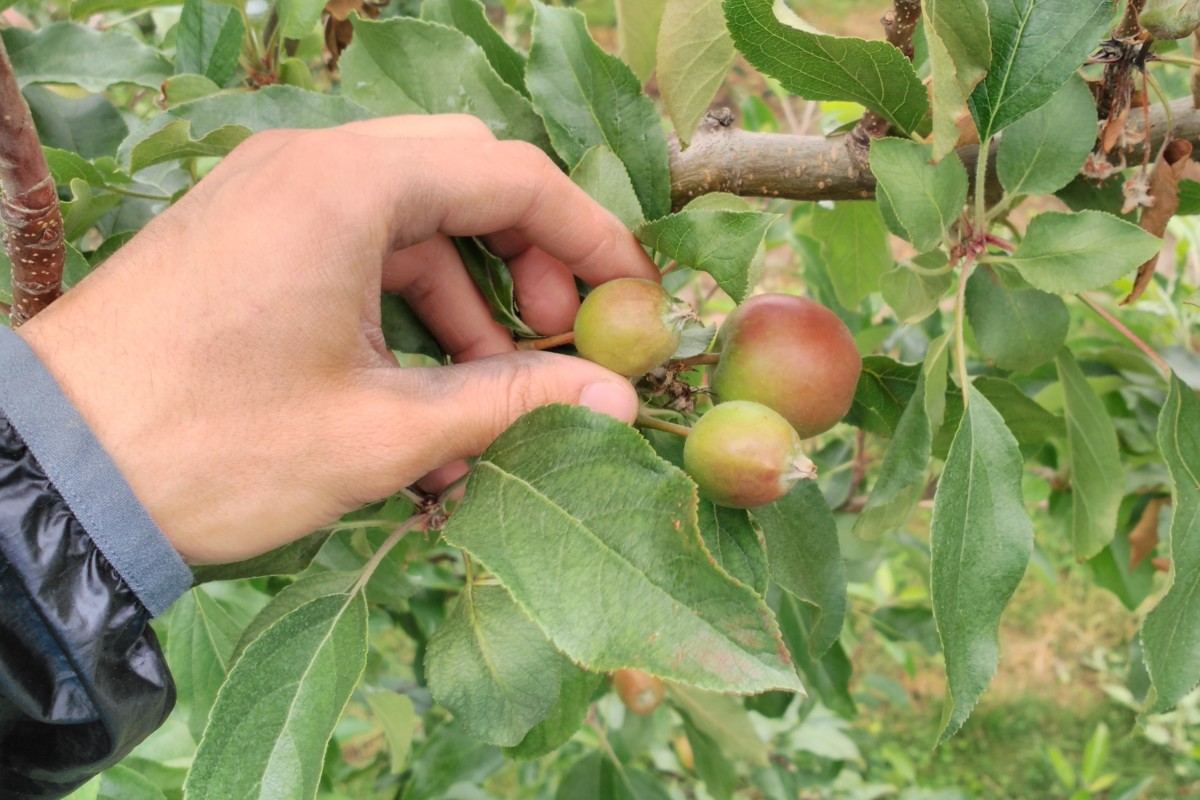
When we plant fruit trees, we all have this ideal picture in our minds. We’ll walk out our back door to our small orchard and pick the perfect, sun-blushed peach. When we bite into it, the juice will crush into our mouth and dribble down our chin and arm.
But for far too many fruit tree owners, the reality is years of feast or famine and a lot of pest damage. Or worse, when you start to get a good crop, the deer eat it. It seems like the stars have to align just right for us to get a consistently good crop.
Related Reading:
Thinning out fruit early in the season can go a long way to getting a bumper crop from your orchard this year and each year after that.
When you look at your fruit trees and finally see tons of tiny green apples, pears or plums, the last thing you want to do is yank a bunch of them off and toss them on the compost pile.
But that’s exactly what you need to do to ensure a good harvest.
It helps to think of your tree as a battery. For every tiny blossom that developed into a fruit, energy was used from the battery. And more energy is needed to make those fruits grow and to produce fruit again next year. Thinning your fruit allows the tree to put energy where it’s needed most.
Let’s take a look at the benefits of thinning.
Blossom Production
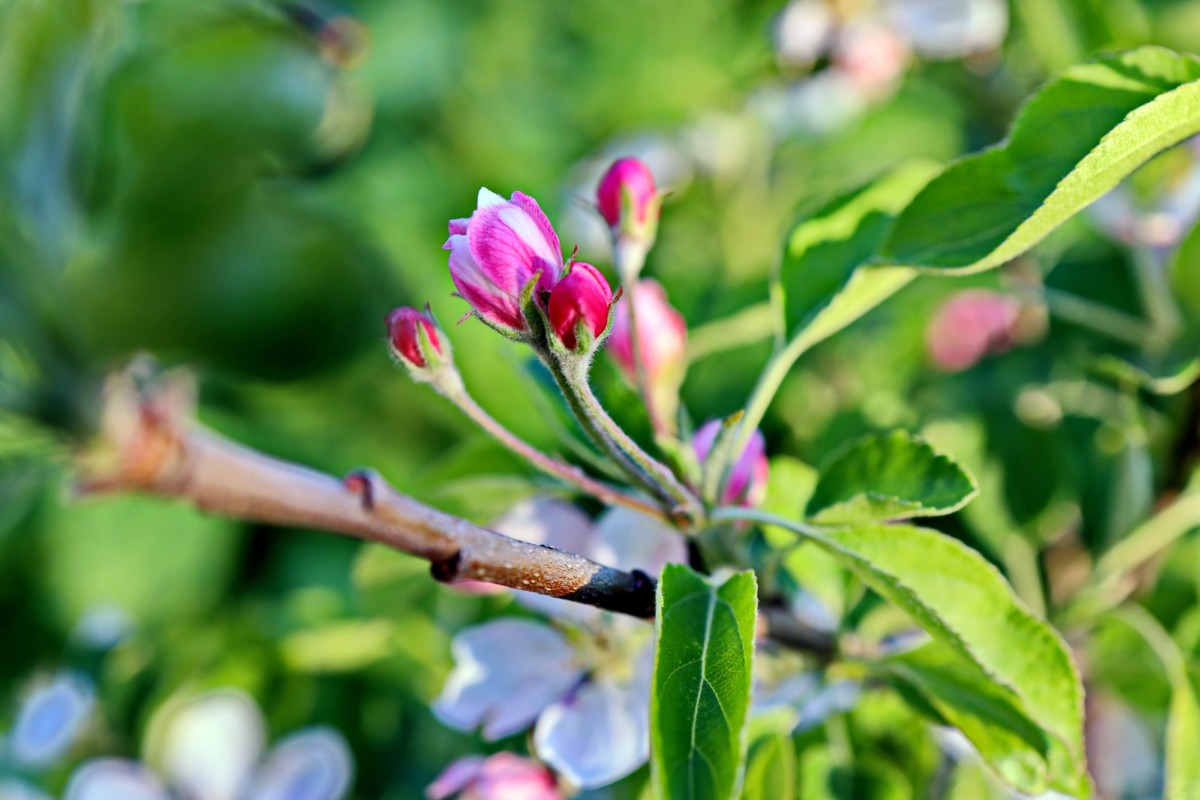
If you get an especially large crop, the tree can put so much energy into growing and ripening it that the tree’s energy stores needed for blossom production the following year will be depleted. Rather than putting out blossoms next year, the tree will still be recuperating from the previous year’s intense effort.
This is a big part of why so many folks have cyclical years – one year; they have a ton of fruit, and the next barely any. It can take an entire growing season for a fruit tree to recuperate from the nutrient-load of unthinned fruit the year prior. Thinning out your fruit ensures the tree has enough energy to produce blossoms each year consistently.
Quality and Size
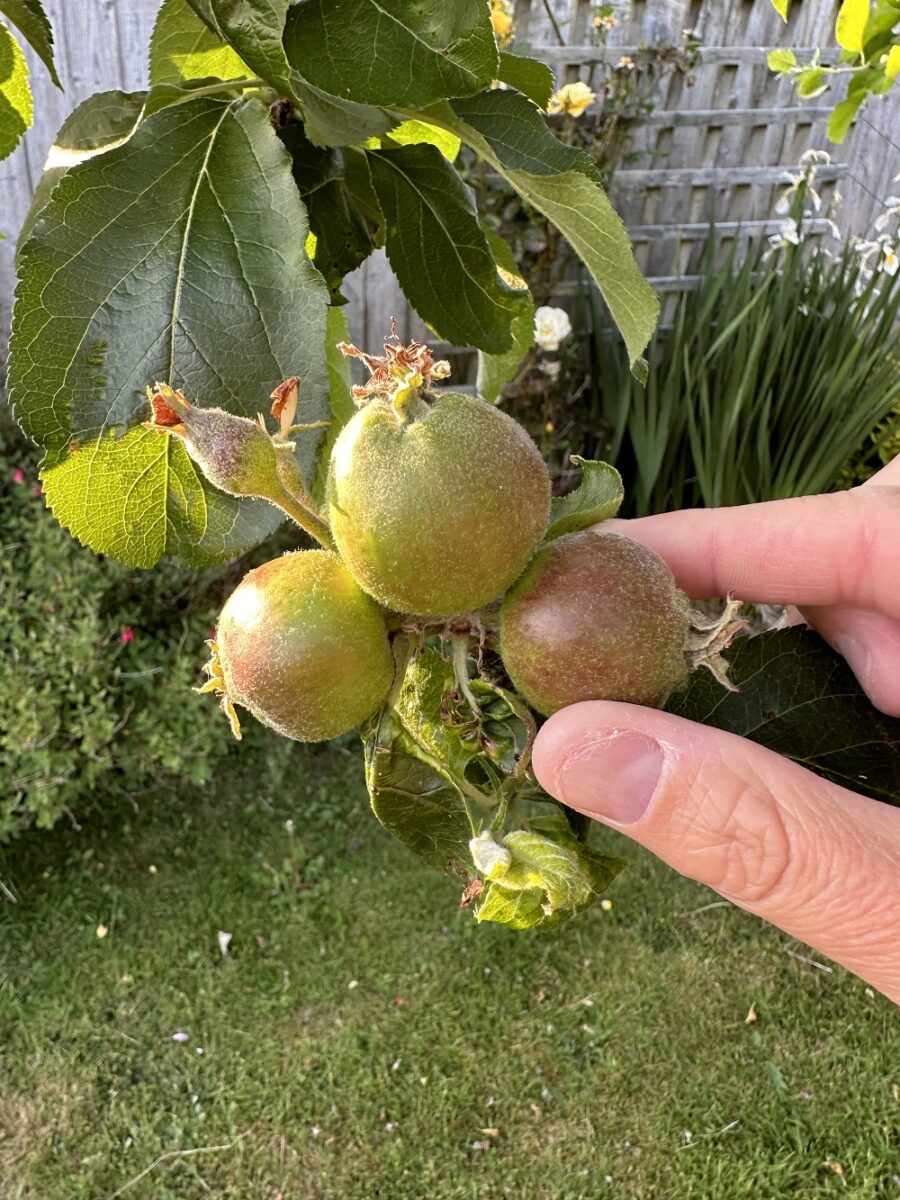
If you leave all that fruit on the tree, you’ll most likely end up with lots of stunted fruit of mediocre flavor and quality. Thinning out the fruit allows the tree to put more energy into the remaining fruit. You end up with larger, more flavorful fruit.
Increased Airflow and Sun
Any longtime gardener can attest to what happens when plants grow together in cramped conditions with very little airflow. These dank close quarters become the perfect breeding ground for bacteria, disease, and mold. Before you know it, most of the fruit is rotting on the ground.
By thinning out your initial fruit set, you greatly improve airflow to each fruit, reducing the risk of disease. You also allow more sunshine to reach the fruit, which is important for certain fruits to ripen properly. Sun exposure is what gives peaches that lovely blush for which they’re known.
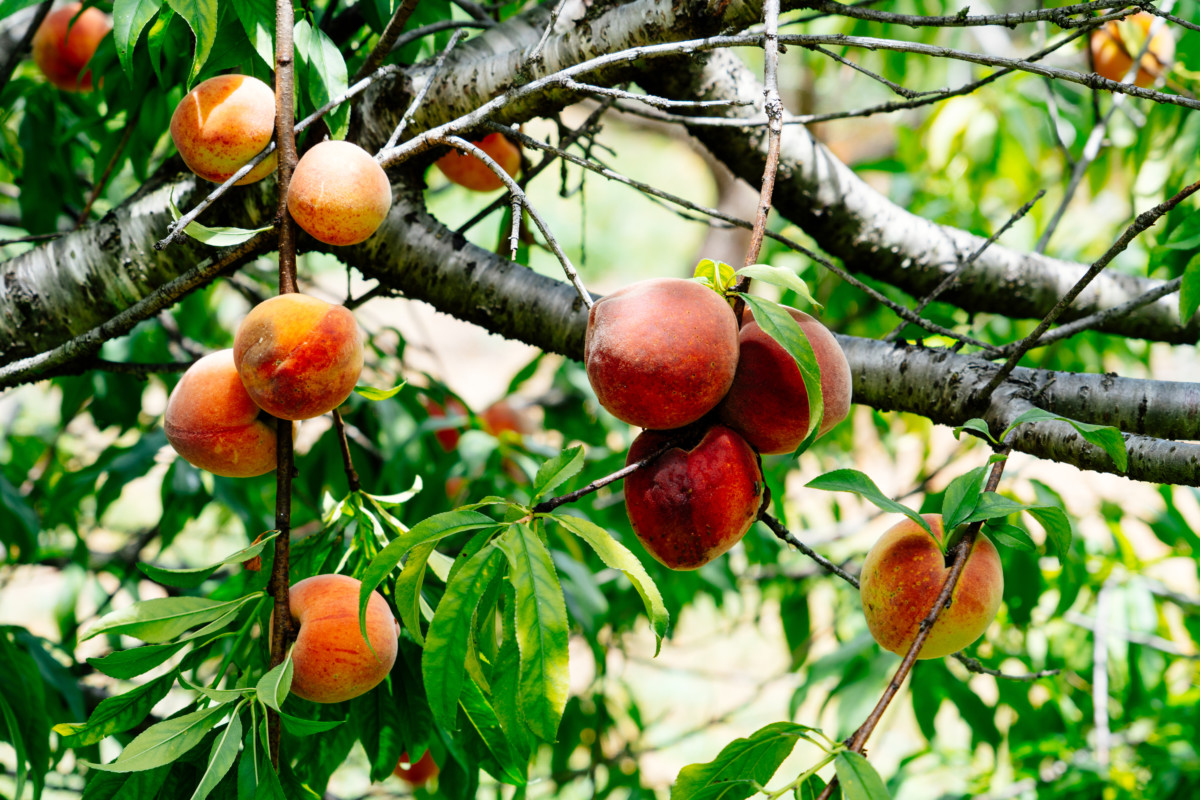
Lessen the Chance of Disease Spreading
You know that old saying, “One bad apple spoils the bunch.” That’s because when the fruit is stored closely together, disease can easily spread from one apple to the next. Believe it or not, the same thing occurs while the fruit is still on the tree.
When you intentionally thin out fruit and create space between each piece of fruit, you lessen the chance of diseases spreading; this goes hand in hand with airflow.
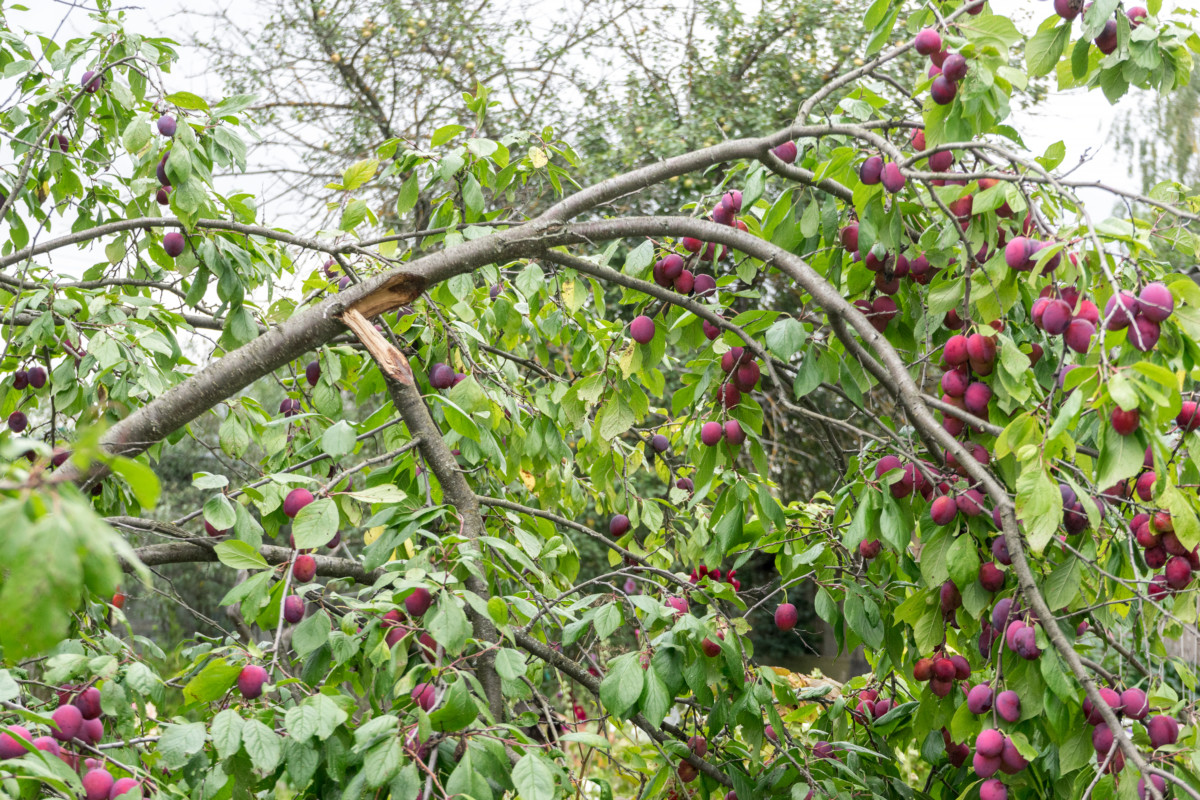
Most importantly, thinning can prevent disaster.
My sweetie has three peach trees growing in his front yard. Two summers ago, we had a massive crop of peaches. We didn’t thin out the young fruit, so hundreds of peaches were on the trees. As the season progressed and the fruit ripened, several limbs began to bend with the weight of the fruit.
We watched as the branches bent lower to the ground each day. Every time it rained, they would touch the ground.
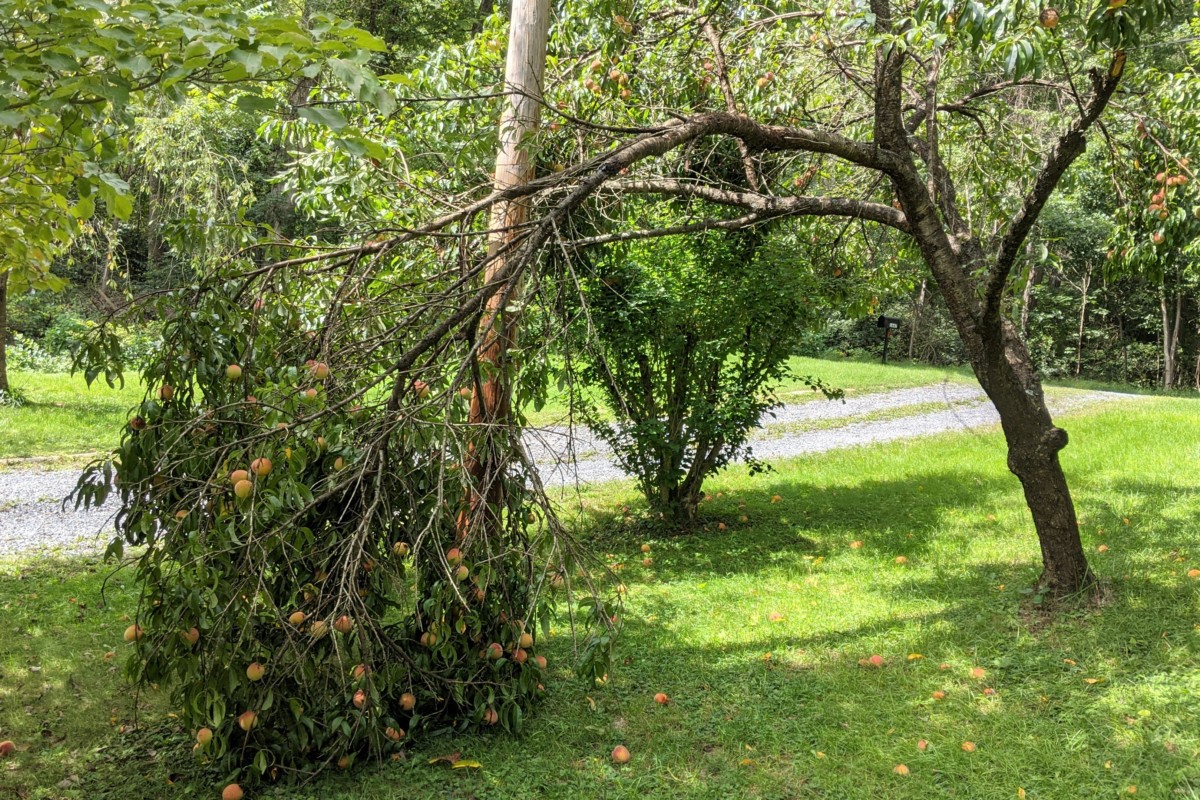
The peaches weren’t ready to be picked. They needed to stay on the tree to ripen further. Yet we knew the weight of the fruit could easily break one of these branches. We kept wondering what we should do.
And then, one night, it happened.
We had a thunderstorm, and although the winds weren’t bad, it was enough to snap one of the overloaded limbs off one of the trees.
Not only did we lose the branch and the fruit on it, but the next spring, we realized we had lost the entire tree. It had succumbed to disease due to the open wound left by the broken limb.
And we lost much of the fruit that season. Because it was so crowded, the peaches rubbed together and rotted on the tree. It seemed that for every nice peach we picked, we threw three or four on the compost pile.
What Fruit Trees Benefit from Thinning?
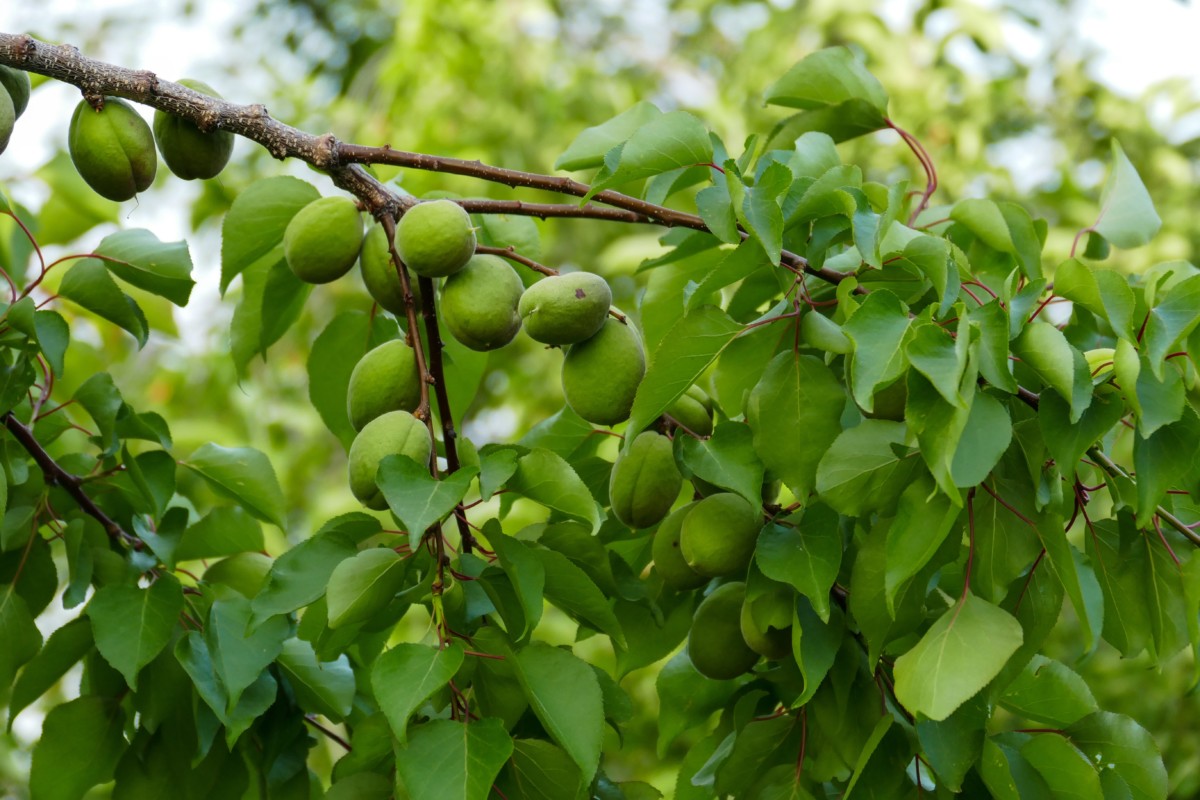
It’s quite simple; if it grows on a tree and is a fruit, you should consider thinning once the fruit has been set.
- Apples
- Pears
- Peaches
- Nectarines
- Plums
- Apricots
When is the Best Time to Thin the Fruit?
There are two ideal times to thin based on your experience and preference. The earliest time to thin is immediately after the fruit has set.
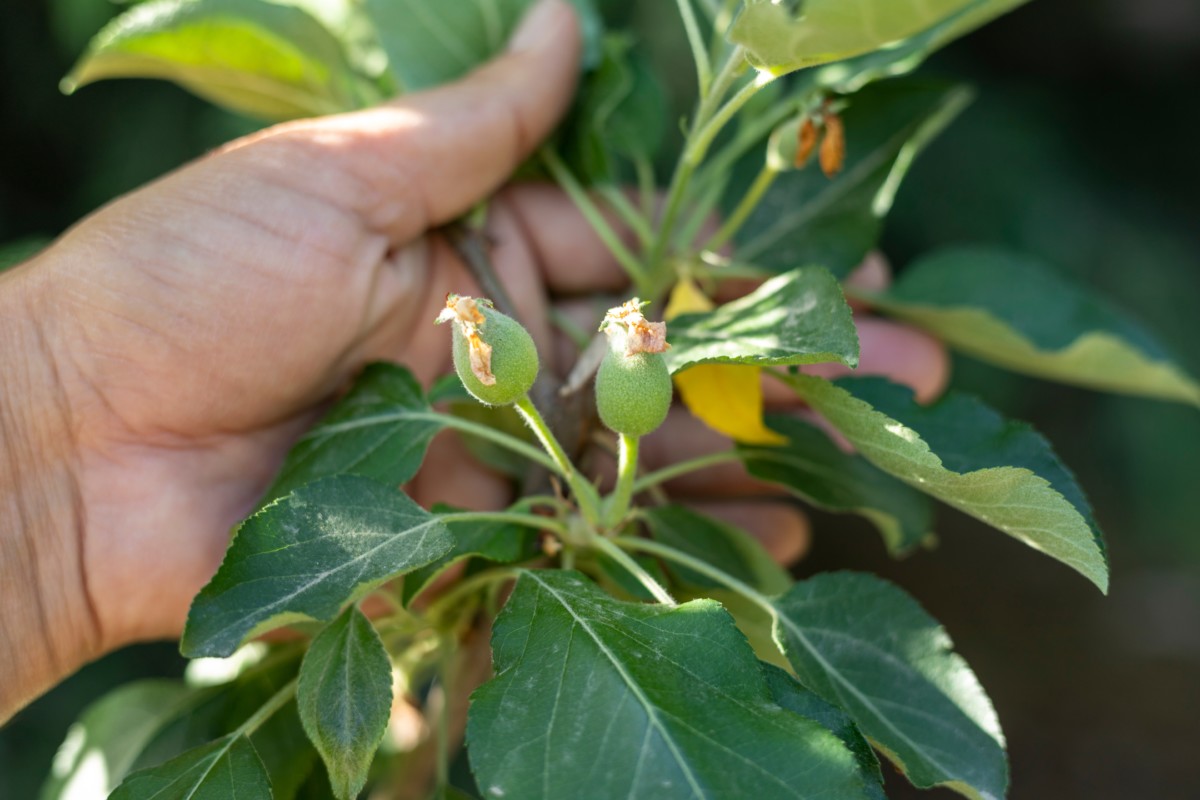
Experienced gardeners know this gives the remaining fruit the longest time on the tree, receiving the most nutrients. You end up with larger fruit.
However, if you thin early, you may be left with a smaller overall harvest after what’s known as the “June Drop.”
June Drop
June Drop is a natural process that occurs when a tree has an especially abundant amount of fruit. The tree will drop smaller fruit or fruit that’s been infested with insects.
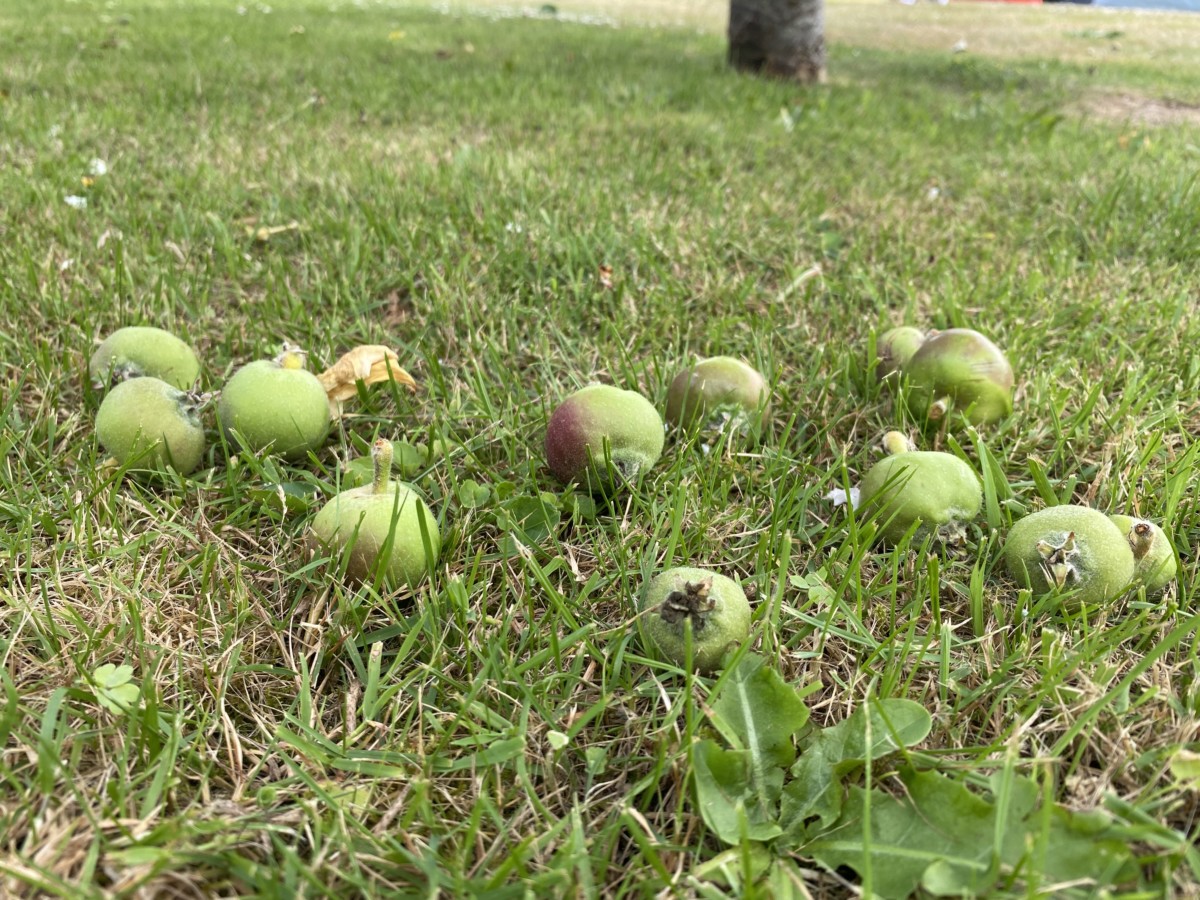
This natural thinning usually occurs in June, hence the name. Although, depending on your growing season, you may experience June Drop in May.
Yes, even after your tree has done some thinning of its own, you should still thin out the remaining fruit.
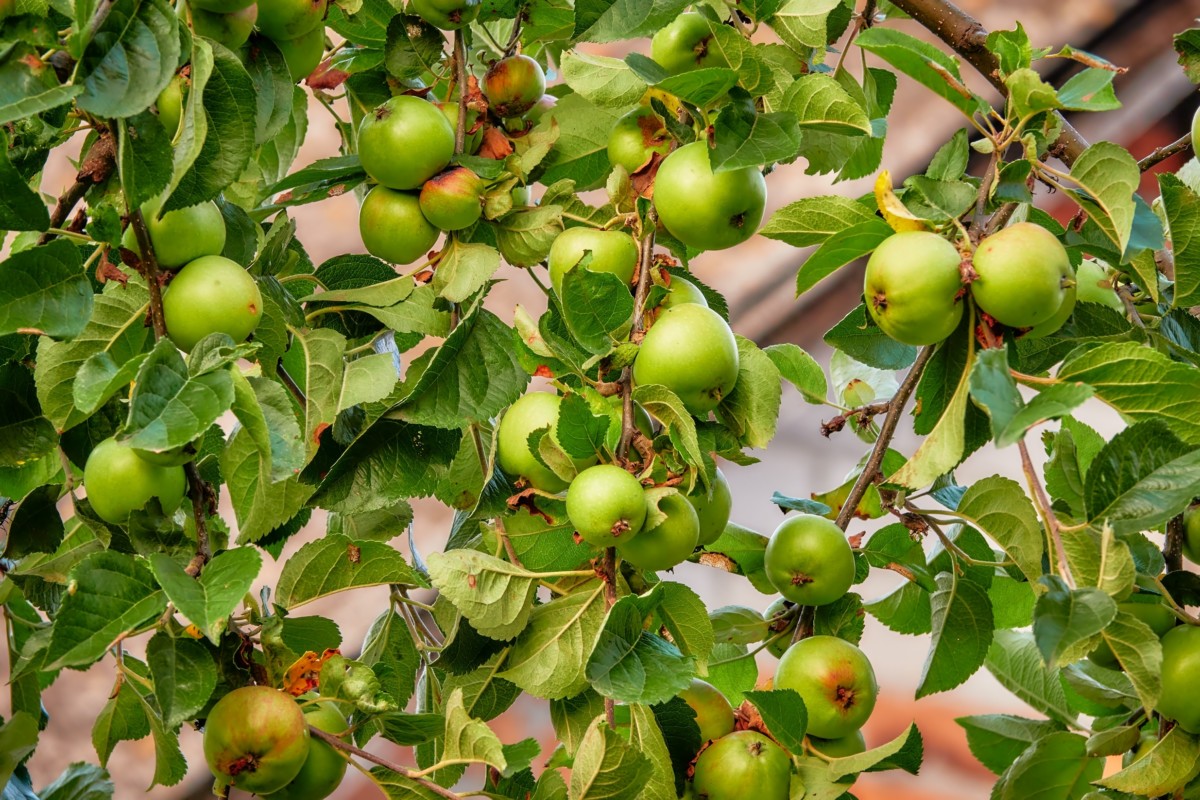
If you don’t thin immediately after fruit set, then June Drop is your cue to manually thin fruit. Waiting until after the June Drop means you’re waiting longer, and fruit that will eventually be thinned is using up nutrients. But this method still has its advantages. Namely, you have less fruit to pick through, and it should now be easier to spot diseased, smaller or deformed fruit as nature has done much of the work for you.
How to Thin Your Fruit Tree
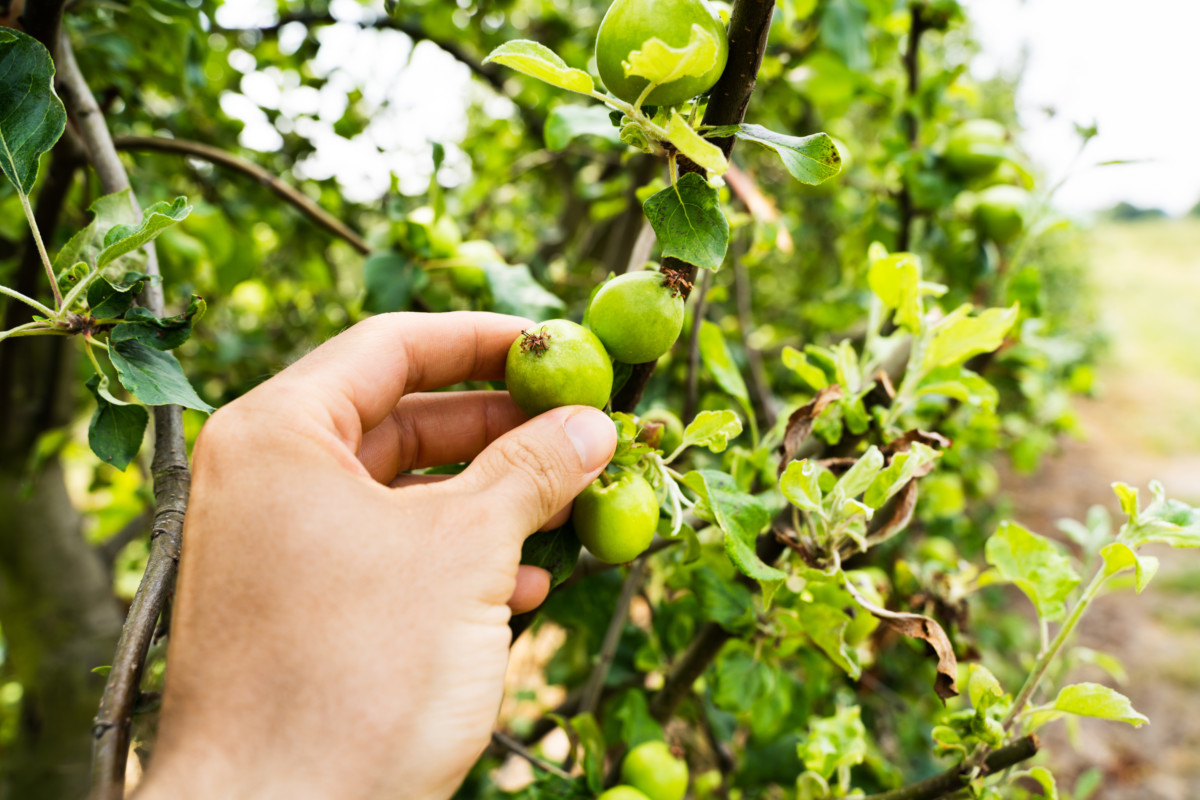
You can use a pair of pruners to remove fruit or simply pull it off with your hand. If you have larger trees, you may need a pole fruit picker to reach taller branches.
Look for especially small fruit, bunches of fruit that are rubbing together or any fruit with obvious pest damage or disease. Depending on the type of fruit, you’ll want to create a minimum of space between each. Here is a handy spacing guide for thinning common fruit trees.
- Apricot – thin to one every four inches
- Apple – grows in clusters, thin to one cluster every six inches, remove smaller inner fruit from each cluster
- Nectarine – thin to one every four to six inches
- Peaches – thin to one every six inches
- Pears – grows in clusters, thin to one cluster every six inches, remove smaller inner fruit from each cluster
- Plums – thin to one every four to six inches
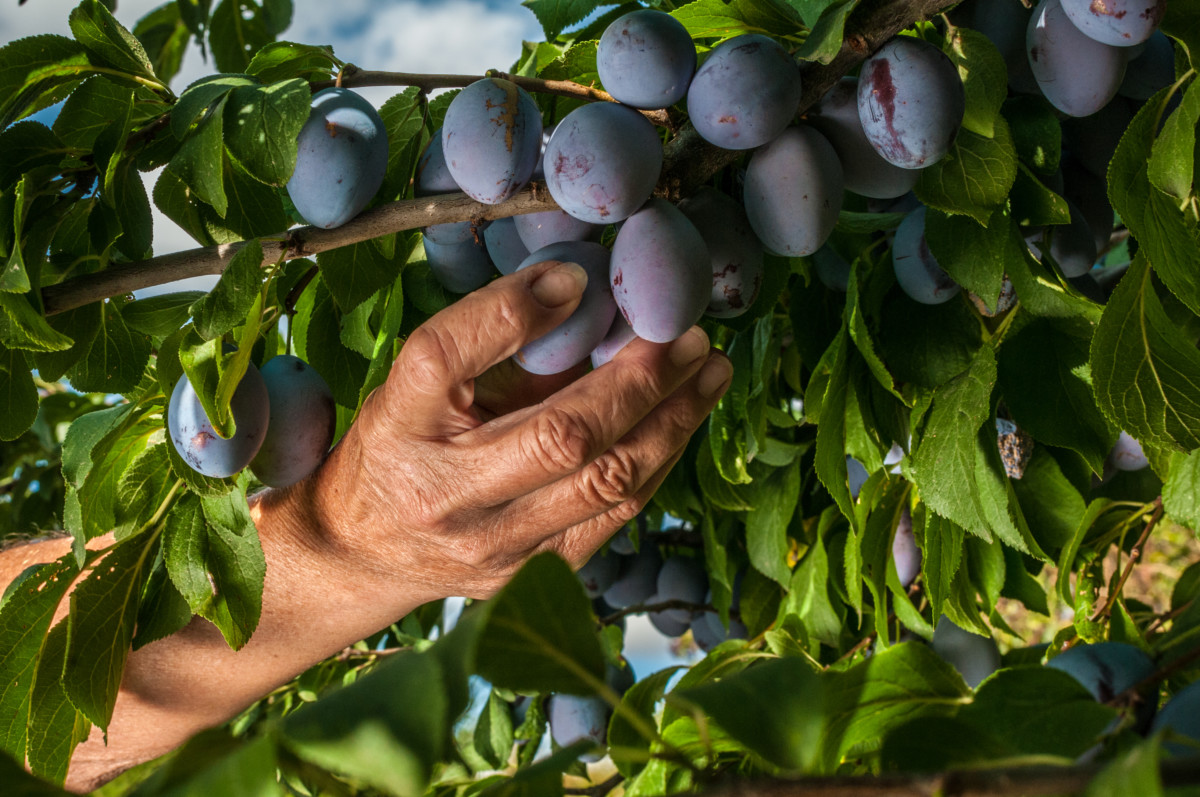
Toss the thinned fruit into the compost bin or give it to livestock.
The first time you do this, it feels counterintuitive, almost wrong. But it only takes a few weeks of watching the remaining fruit grow to see what a difference thinning your fruit tree makes. And come late summer, you’ll reap the benefits of your thinning. Whether it’s canning apricot jam or making hard cider with your apples, you’ll have plenty of fruit to work with.
And because you have thinned your trees, you’ll also have a much better harvest the following year. You’re well on your way to a successful backyard orchard.
Read Next:

Get the famous Rural Sprout newsletter delivered to your inbox.
Join the 50,000+ gardeners who get timely gardening tutorials, tips and tasks delivered direct to their inbox.


